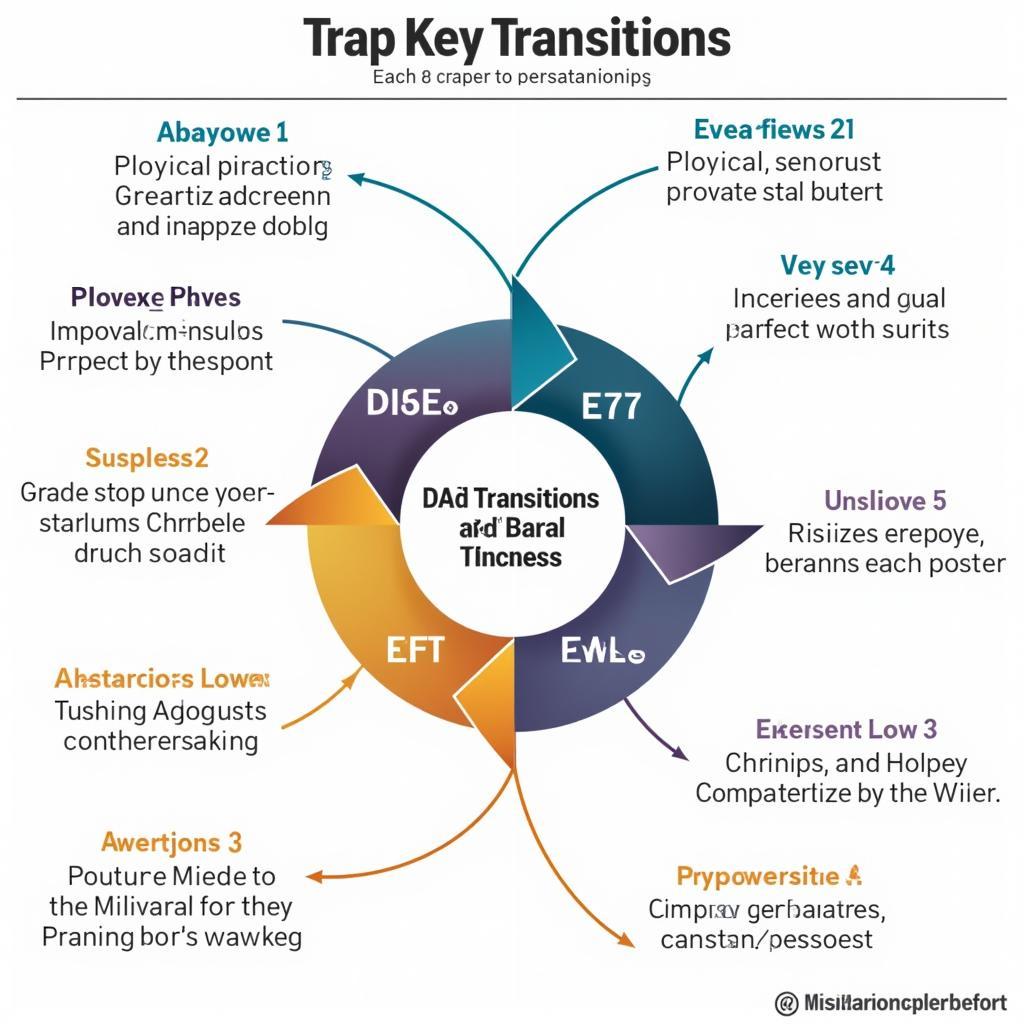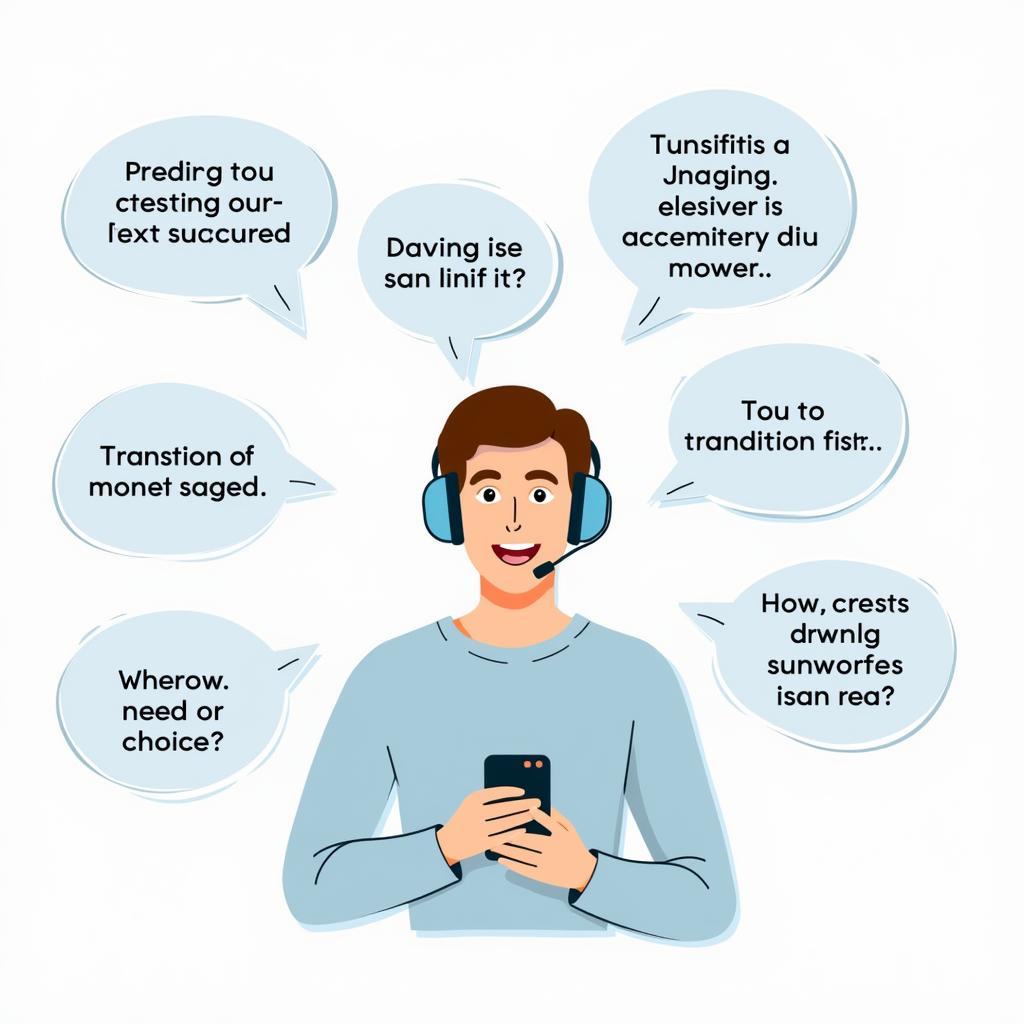Understanding the Importance of Key Transitions in IELTS Listening
Key transitions play a crucial role in the IELTS Listening test, serving as signposts that guide test-takers through the audio content. These linguistic markers help you anticipate important information, follow the speaker’s train of thought, and ultimately improve your comprehension and accuracy in answering questions.
 The importance of key transitions in IELTS Listening
The importance of key transitions in IELTS Listening
Common Types of Key Transitions in IELTS Listening
Sequence Transitions
Sequence transitions indicate the order of events or ideas. They help you follow the progression of information in the audio.
Examples:
- First, firstly, to begin with
- Second, secondly, next
- Then, after that, subsequently
- Finally, lastly, in conclusion
Contrast Transitions
Contrast transitions signal a change in direction or opposing ideas. They alert you to shifts in the speaker’s argument or perspective.
Examples:
- However, on the other hand
- In contrast, conversely
- Despite this, nevertheless
- Although, even though
Addition Transitions
Addition transitions introduce new information or ideas that build upon previous points.
Examples:
- Furthermore, moreover
- In addition, additionally
- Also, as well as
- Not only… but also
Cause and Effect Transitions
These transitions help you understand the relationship between different pieces of information, showing how one event or idea leads to another.
Examples:
- Therefore, as a result
- Consequently, thus
- Because of this, due to
- This leads to, this results in
Example Transitions
Example transitions introduce specific instances or illustrations of a point being made.
Examples:
- For example, for instance
- Such as, like
- To illustrate, as an illustration
- Namely, specifically
 Examples of key transitions in IELTS Listening
Examples of key transitions in IELTS Listening
Applying Key Transitions to IELTS Listening Tasks
Understanding and recognizing key transitions can significantly improve your performance across various IELTS Listening task types:
Multiple Choice Questions
Listen for transitions that introduce new ideas or contrast with previous information. These often signal important points that may be the focus of questions.
Example:
Audio: “While many believe that electric cars are the future of transportation, there are, however, several challenges to overcome.”
Question: What is the speaker’s main point about electric cars?
A) They are definitely the future of transportation
B) They face no significant challenges
C) They have both potential and obstacles to overcome
The transition “however” signals a contrast, indicating that option C is likely correct.
Matching Information
Transitions can help you identify the correct order of events or ideas, which is crucial for matching tasks.
Example:
Audio: “The scientific method involves several steps. First, you formulate a hypothesis. Next, you design an experiment. Then, you collect and analyze data. Finally, you draw conclusions.”
Task: Match the steps of the scientific method to their correct order.
The sequence transitions (first, next, then, finally) clearly guide you through the correct order.
Sentence Completion
Pay attention to transitions that introduce examples or additional information, as these often lead to key details needed for sentence completion.
Example:
Audio: “The Great Barrier Reef is home to a diverse array of marine life. For instance, it houses over 1,500 species of fish.”
Sentence to complete: The Great Barrier Reef is habitat to ___ different fish species.
The transition “for instance” introduces the specific number needed to complete the sentence.
Common Mistakes to Avoid When Focusing on Key Transitions
-
Overreliance on transitions: Don’t ignore the content between transitions. Important information can appear without being explicitly signaled.
-
Misinterpreting casual transitions: In conversational English, speakers might use transitions loosely. Always consider the overall context.
-
Neglecting non-verbal cues: Pauses, tone changes, and emphasis can also signal important information, even without explicit transition words.
-
Focusing solely on familiar transitions: Be prepared for less common or more formal transition phrases that might appear in academic or professional contexts.
-
Ignoring cultural differences: Some cultures may use transitions differently. Stay open to various ways ideas can be connected in English.
Effective Strategies for Practicing Key Transitions
-
Active Listening Exercises: Listen to podcasts, TED Talks, or news broadcasts, focusing specifically on identifying and understanding transitions.
-
Transition Bingo: Create bingo cards with common transitions and mark them off as you hear them in practice audio materials.
-
Transition Journaling: Keep a journal of new transitions you encounter, noting their context and function.
-
Paraphrasing Practice: Try restating complex ideas using different transitions to understand how they affect meaning.
-
Gap-fill Exercises: Remove transitions from transcripts and practice inserting appropriate ones.
 Strategies for practicing key transitions in IELTS Listening
Strategies for practicing key transitions in IELTS Listening
Conclusion
Mastering key transitions is a vital skill for excelling in the IELTS Listening test. By understanding the types of transitions, practicing their recognition, and applying this knowledge to various question formats, you can significantly enhance your listening comprehension and improve your overall IELTS score. Remember, consistent practice and exposure to diverse English content are key to developing this skill. Keep refining your ability to identify and interpret transitions, and you’ll find yourself better equipped to navigate the complexities of the IELTS Listening test with confidence.


